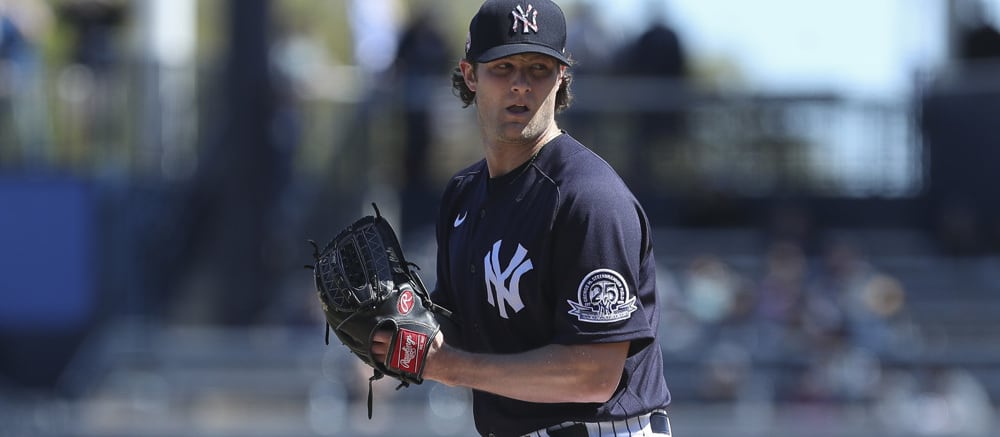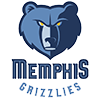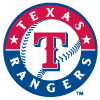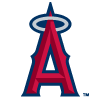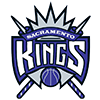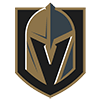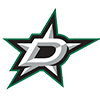For a long stretch of time, it felt like the 2020 baseball season simply would not happen. While it may be the case that the season is drastically shorter than we are used to (60 games), DFS players can make every single one of them count starting with Thursday's two-game opening slate.
Before we begin in earnest, it must be noted that there are some new rules that have been put in place as part of MLB's health and safety protocols. Most of them don't really concern us, as they relate to on-the-field practices. One thing we should be acutely aware of, however, is the implementation of a universal designated hitter. While this means no more easy outs in the National League, it is the case that those teams haven't constructed their teams with a DH in mind, which should still make the lineups somewhat weaker.
Without further ado, let's get to it.
Pitchers
Gerrit Cole, NYY at WAS ($10,000): When we are dealing with elite teams on a short schedule, it can be difficult to find leverage through traditional statistics, as these teams will often be the best in the league regardless of metrics like handedness or home/road splits. That's when I like to turn to pitch value statistics. Pitch value statistics let you know how a player (or team) fared against a specific pitch in relation to the rest of the league. The key is to find an offering in the pitcher's arsenal with a high runs above average score that they throw frequently, then find out if the team they are facing struggles against said pitch. You almost certainly don't need me to tell you how phenomenal Cole was last season (2.50 ERA, 2.48 xFIP, 326 strikeouts in 212.1 innings), but what I will highlight from a leverage standpoint is the fact that Cole's slider was the ninth-best in the league according to RAA at 13.6. He threw the pitch nearly a quarter of the time. The Nationals, despite being top-10 in most offensive metrics, were a bottom-half team against the slider, wrapping up the season with a collective -21.5 RAA. For those wondering, the additions of Starlin Castro and Eric Thames should only help our cause, as they both registered negative RAA scores against the pitch in 2019. Cole may be the most expensive pitcher on the slate, but the value of the pay-up increases on short days like this, as those who don't pay for the quality will be on the outside looking in with respect to the cash line if he turns in one of his usual quality performances.
Clayton Kershaw, LAD vs. SF ($7,700): It's sort of bizarre to see Kershaw priced this low on any slate. While his end-of-season numbers may not have looked like what we expect from the former Cy Young Award winner (3.03 ERA), the only peripheral that was really out of whack was his homers allowed, which swelled to 1.4/9. The Giants' projected Opening Day lineup is largely revamped from one year ago, and while the majority of them don't necessarily struggle against lefties, all but two of them finished 2019 with a ground ball rate higher than 41 percent. Since Kershaw threw grounders 48 percent of the time, and ground balls equate to the least amount of damage, we should be able to count on Kershaw to control the game and limit the opposing offense.
Top Targets
Juan Soto, WAS vs. NYY ($4,800): Soto stood out in a sea of powerful bats in 2019, finishing the year sporting a robust .281/.416/.584 slash line against right-handed pitching in 356 at-bats. Gerrit Cole may be one of the best pitchers in the game, but even he couldn't escape the rising home run totals last year, having allowed 17 long balls in 110 innings.
Hunter Pence, SF at LAD ($4,500): An immediate beneficiary of the universal DH rule, Pence is expected to slide into the lineup Thursday despite foot inflammation that leaves him unable to do much else besides swing the bat. Pence absolutely laid waste to left-handed pitching last year, logging a .309 ISO and a .416 wOBA in 110 at-bats. The veteran was also able to make good contact against southpaws, striking out against them just 19 percent of the time. The majority of the homers Kershaw gave up in 2019 were to opposite-handed hitters, as we can see from the 1.5 HR/9 rate he kept in 139 innings.
Best Values
Aaron Hicks, NYY at WAS ($4,200): It has been so long since Aaron Hicks was considered someone to watch as a young prospect that he might be overlooked as a player who can bring home the points, particularly on a high-powered slate like this. The reality is that Hicks has been a remarkably consistent power hitter in recent years, logging ISOs over .200 in each of the last three seasons. Always someone to make contact, Hicks' strikeout numbers spiked suddenly in 2019 (28 percent) after dealing with persistent elbow issues all season. Hicks underwent Tommy John surgery during the offseason and seems to be fully recovered, which may mean we see those numbers dip closer to his career average (21 percent). In what seems to be a common theme for the elite pitchers on this slate, Max Scherzer was also bitten by the home run ball in 2019, keeping a 1.3 HR/9 rate against left-handed hitters in 75 frames.
Tyler Heineman, SF at LAD ($3,400): Buster Posey has decided to opt-out of playing this season, which means that someone is going to have to fill the void at the catcher's spot. We don't have official confirmation that the job belongs to Heineman, but he's certainly the most logical choice to get the lion's share of at-bats, having posted an incredible .341/.397/.622 slash line with just an 11.5 percent strikeout rate in 182 plate appearances with Triple-A New Orleans last season. Manager Gabe Kapler has also praised the young backstop's versatility at the plate.
Stacks to consider
Dodgers vs. Johnny Cueto: Cody Bellinger ($5,100) Corey Seager ($4,400) A.J. Pollock ($3,900)
To say that Cueto had a rocky 2019 would be an understatement, as the 34-year-old managed just four starts after recovering from Tommy John surgery, pitching to a 5.06 ERA in those appearances. In fact, Cueto has amassed just 13 starts over the last two years. While I wouldn't generally cite spring training numbers as an indication of how a player will look to begin the season, the fact that Cueto allowed nine runs in 6.1 innings over two appearances doesn't exactly inspire confidence after the long layoff and lack of quality results. Cueto could be in for a long night unless he can turn back the clock, as he has struggled to get his strikeout rate back over 20 percent since 2018.
The fact that Bellinger leads this stack should come as a surprise to no one. The 25-year-old has earned his designation as the most expensive hitter on the slate after posting a phenomenal .324 ISO and .415 wOBA in 156 games last season. What's so remarkable about this is the left-hander is consistent against both orthodox and southpaw hurlers, as we can see from the .167 and .150 wRC+ he put up against them, respectively.
Seager's 2018 season was mostly lost to a UCL sprain that required Tommy John surgery, but he made up for lost time last year, notching a solid .211 ISO to go along with a .340 wOBA. As is the case with most left-handed hitters, Seager did the bulk of his damage against righty pitchers, against whom he logged a .528 slugging percentage in 322 at-bats. Seager is expected to occupy the fifth spot of the batting order behind Bellinger, which should leave him with RBI opportunities.
If you are going to roster Bellinger, you need to take opportunities to save salary. Pollock represents a perfect way to do that without sacrificing potential point-scoring ability, as he ended the 2019 season with a .201 ISO and a 44 percent hard contact rate in 308 at-bats. A player like Pollock highlights why a Dodger stack is so valuable on a slate like this, as there is power up and down the lineup, which should allow DFS players to plug in various cheap players in order to spend up for the elite talents at the top.
Giants vs. Clayton Kershaw: Mike Yastrzemski ($4,000) Wilmer Flores ($3,800) Pablo Sandoval ($3,500)
It may seem strange to recommend Kershaw and advocate stacking against him in the same article, but such is the nature of a two-game slate with two elite pitchers on it. While Scherzer allows homers to lefties as mentioned, the Yankees don't have enough powerful left-handed hitters to really exploit that deficiency, which leaves us with a value stack that may not be widely used. I spoke at length about Kershaw above but would also add that he allowed a hard contact rate of over 40 percent from both sides of the plate in 2019.
Hunter Pence is the rightful person to kick off this stack, but since I already went into why this matchup is favorable for him, we will start with Yastrzemski. The 29-year-old parlayed a tremendous 40 games at Triple-A Sacramento into a shot with the big club in 2019 and didn't disappoint, finishing the year with a .245 ISO and a .353 wOBA in 371 at-bats. While this is a lefty-lefty matchup, Yastrzemski showed himself quite capable of handling same-handed pitchers in his debut, as evidenced by the 146 wRC+ he logged in 82 at-bats.
I alluded to the fact that the Giants will receive help against left-handed pitching due to their revamped lineup, and Wilmer Flores is chief among those who should provide a boost. Flores' success at the plate in 2019 was limited exclusively to lefty pitchers, against whom he logged a .279 ISO and .405 wOBA in 104 at-bats. Flores figures to nestle into the three-spot on Thursday, which should allow him some nice point-scoring opportunities.
Sandoval is another name that may be overlooked by the wider DFS community, but he is worth more than a passing glance on this slate due to the tremendous .313/.353/.583 slash line the switch-hitting third baseman tallied in 2019. All of the Giants I have listed in this article are expected to hit in consecutive order (from two to five) in Thursday's lineup, which means this stack could provide a tremendous amount of points if it goes off.


